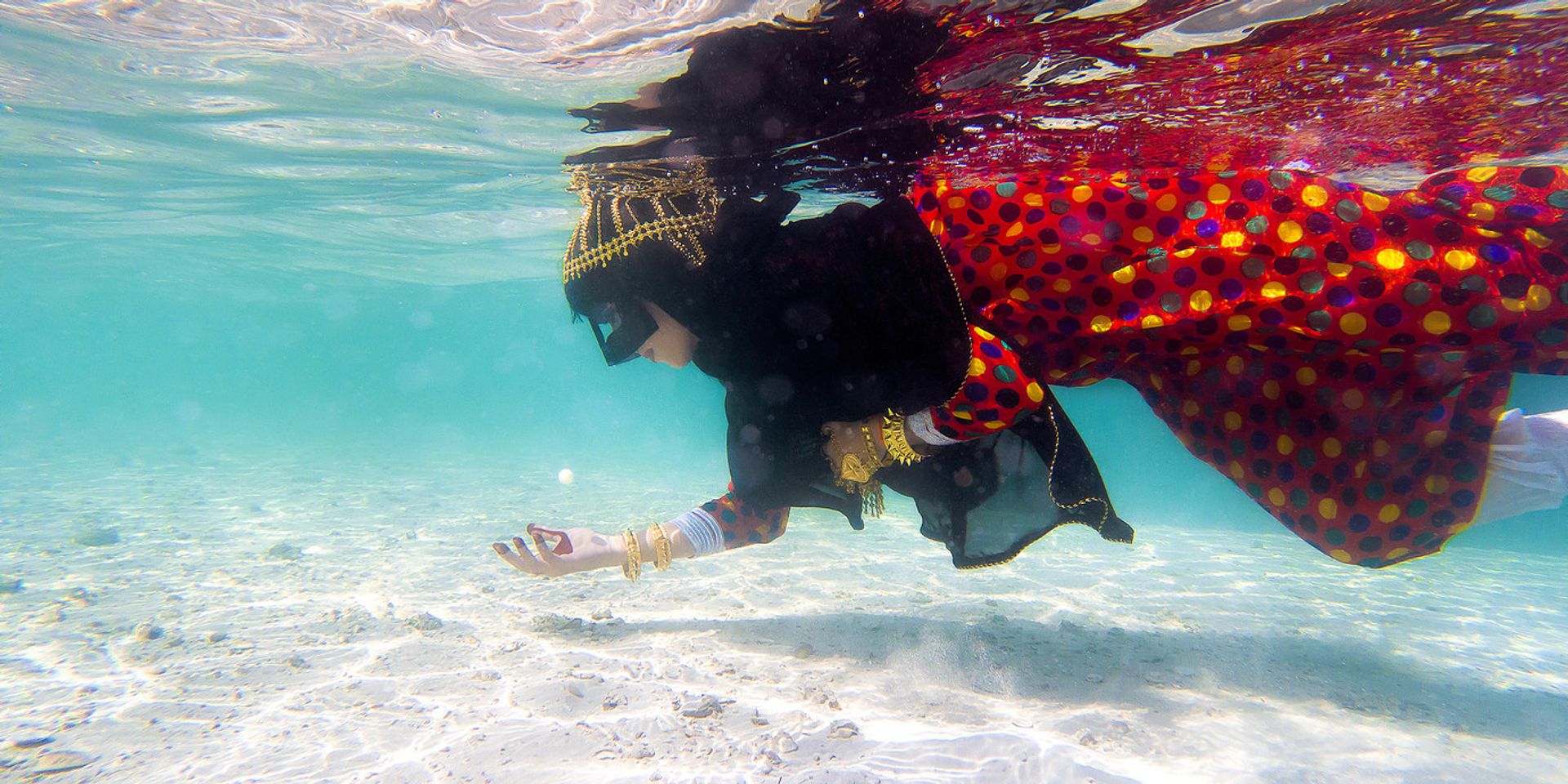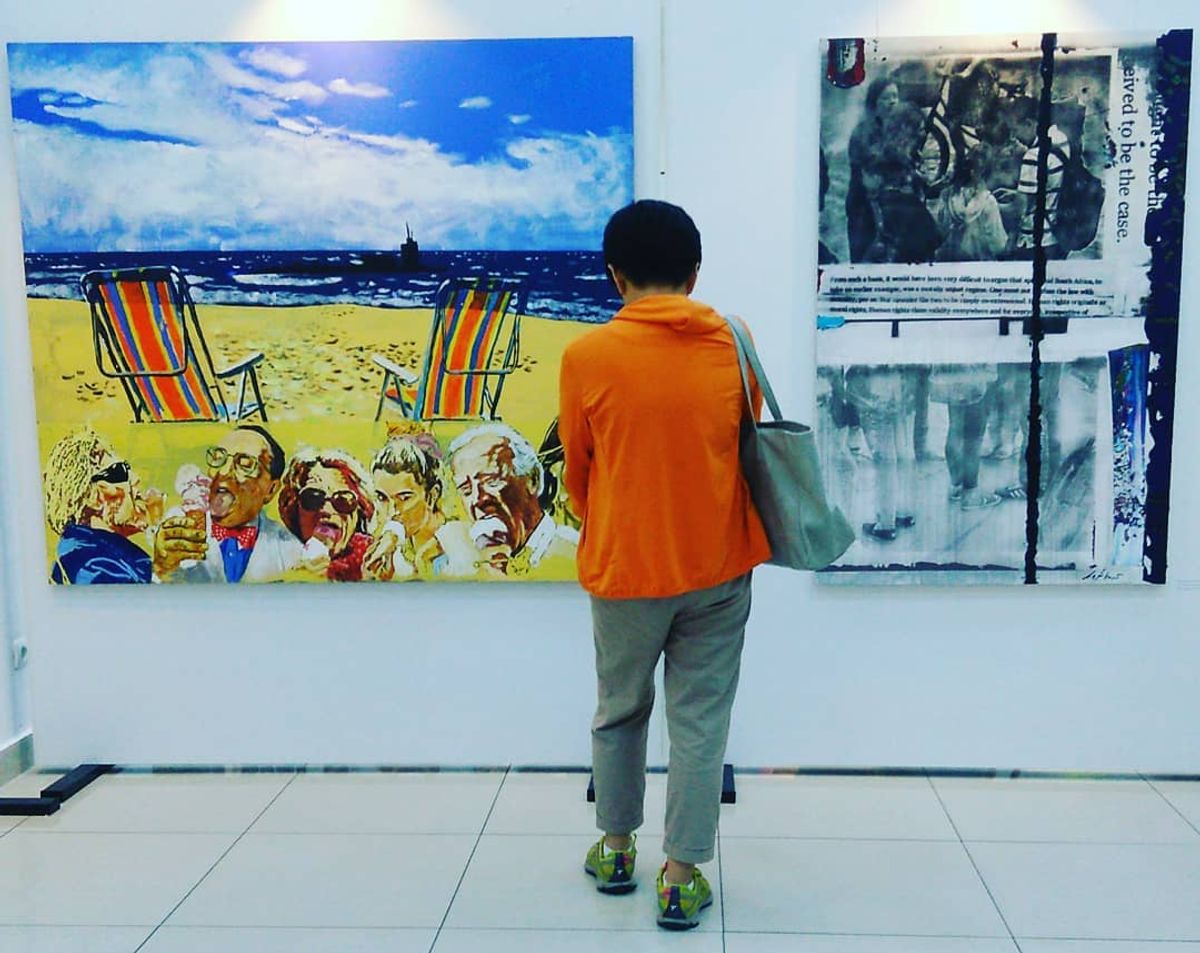Just three days after a revolution swept Armenia, the country's first art fair opened in Yerevan. Despite concerns that the political unrest would disrupt its opening, the Armenia Art Fair (11-14 May) went ahead as planned, with over 700 guests attending the opening and almost 2,000 attendees in total. "These numbers are really amazing for Armenia, and we consider this art fair to be a huge success," says Sarah Watterson, the fair's head of public relations and communications.
Protests and marches against the then-prime minister Serzh Sargsyan began in March but escalated in April in reaction to his election for a third consecutive term. Despite being mostly peaceful, the revolution caused a national lockdown on 2 May with roads, trains and the airport in Yerevan shut down and the borders between Georgia and Iran closed. "We certainly were very nervous in the weeks leading up to the fair as the revolution gained momentum and intensity," Watterson says. "We knew we might have to cancel at any moment."
Sargsyan's opponent and leader of the protests, Nikol Pashinyan—a former journalist who has previously been imprisoned for his political activism—was elected as Armenia's new prime minister on 8 May, three days before the fair’s opening.
The fair took place in the Yerevan Expo Centre with 19 exhibitors including galleries as well as self-represented curators and institutions. Among those on show were the established Armenian space Albert & Tove Boyajian Gallery, the London start-up Litehouse Gallery and the State Academy of Fine Arts, Armenia.
“Our goal is to make Armenia a regional hub of contemporary art and to create an art platform that is flexible, accessible and can accommodate both mainstream galleries and ones that operate more unconventionally, such as pop-up or online galleries,” says the fair’s director, Zara Ouzounian-Halpin. Despite the travel disruptions, all of the invited international artists and galleries attended, she adds, although it is likely that international collectors may have been put off. In total, ten works were sold at the fair, mostly to Armenian buyers.
The London-based independent curator Lizzy Vartanian Collier exhibited a collection of works by Middle Eastern artists that were first shown during London’s Arab Women Artists Now Festival in March. “The fair provided a very real opportunity for me as an emerging curator to sell and exhibit work in an environment that would be nearly impossible in the UK,” she says, noting that while she did not sell any of the works in London she sold Shaikha Fahad Al Ketbi’s photograph Ghaya (2016) for $1,000 at the fair to an Armenian collector.

Shaikha Fahad Al Ketbi’s Ghaya (2016) sold for $1,000 The artist
The Armenia Art Fair is produced by the non-profit Aragil Art Foundation and its American-Armenian funders Nina and Raffi Festekjian and, unusually, no stand rents were charged for the inaugural addition. “We have made a great beginning in terms of encouraging artistic investment in the country and to advance the arts and art education by fostering a new generation of talent,” Nina Festekjian says.
The six-strong all-female team is already planning next year’s fair, hoping to double in size and to expand the programme to include young artists from Iran, Russia and the Caucasus, particularly for those without representation. “I think that in a lot of ways the revolution helped the fair,” says Watterson. “Certainly the spotlight is on Armenia and the Armenian people have shown themselves to the world to be a force to be reckoned with, which reflects on the Armenia Art Fair.”


